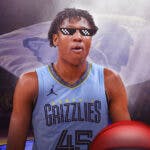The city of Memphis is one of most historic places in the entire country, being the place where Martin Luther King Jr. was assassinated at the Lorraine Motel on April 4, 1968. It now has the National Civil Rights Museum, which has become a popular tourist spot in the city. However, not all statues are inside it, and two can be found around downtown Memphis.
That has been noticeable for many, including Grizzlies head coach David Fizdale, who recently spoke, via David Aldridge of NBA.com, about having the statues of former confederates Jefferson Davis and of Nathan Bedford Forrest be moved inside the museum, in order to put them in proper context.
“I’m not even saying tear them up and melt them down,” he said. “Put them in their proper context in history. Their proper context is in a civil rights museum, where you could put them in context and talk about how awful they were. I just feel our citizens should not have to see that involuntarily. You have Sun Studios (where Elvis Presley and other early rock n’ rollers cut their records) on one side of the (Health Services) Park and the University of Tennessee Medical School on the other side. How is that a good look, with people eating their lunches down there and people come down to that area to sightsee?”
Both Davis and Forrest are infamous for garnering a huge fortune before the Civil War, mainly because of the slave trade. The latter even became a general of the confederate army, and a member of the Ku Klux Klan.
A petition was made last month where 4,500 residents of the city demanded for the removal of both statues, and was delivered to the Memphis City Council. The Greater Memphis Chamber of Commerce and even mayor Jim Strickland have both said that they are also in favor of the petition, however, removing the statues is not going to be that easy as they need to seek a waiver from the historical commission first.
Fizdale's comments go to show that members of the NBA community do not talk about basketball alone these days. They have been more active in social issues, and have been using their statures to influence the public, and the sport as a platform to promote positive change.




